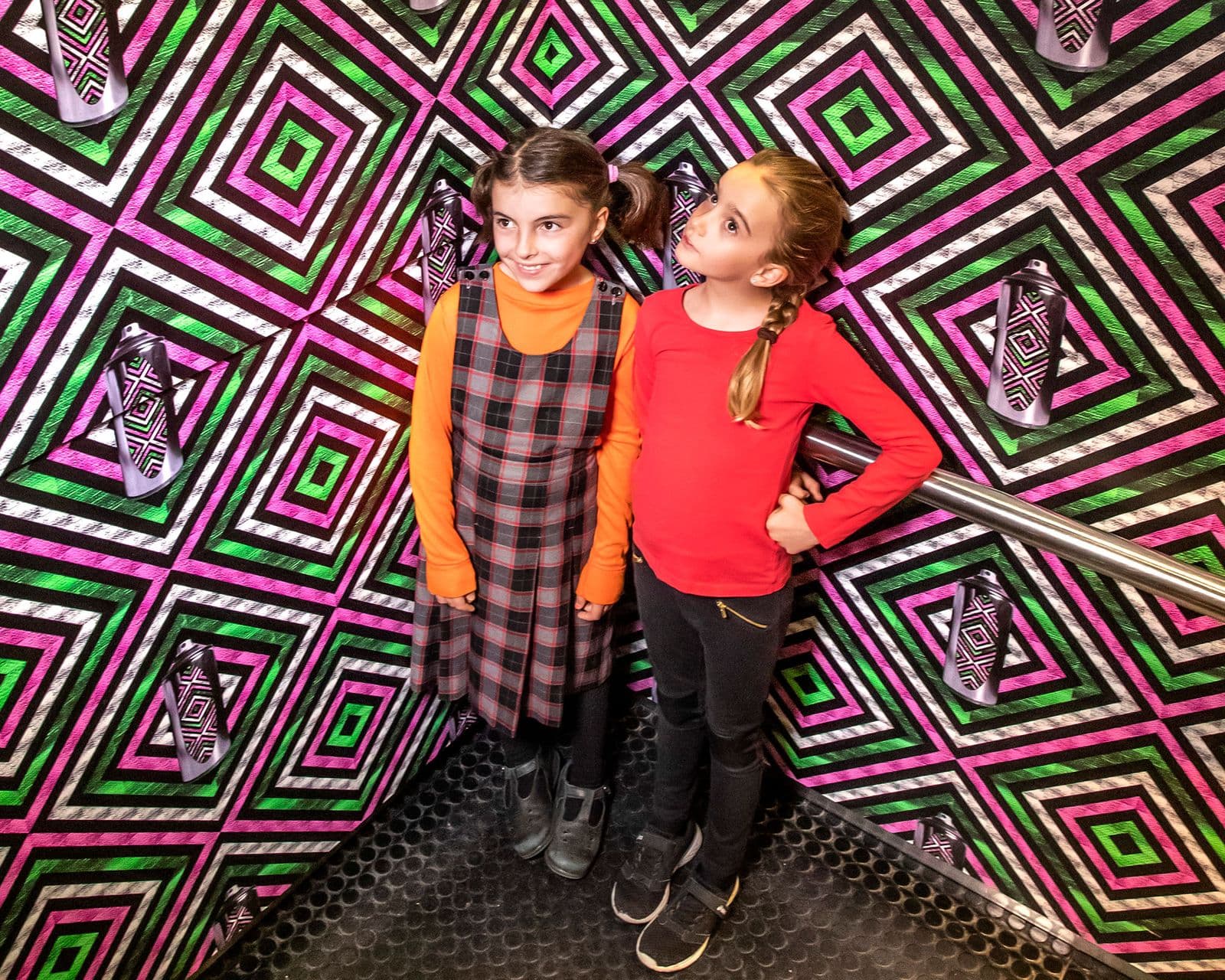Making

Reko Rennie's Message Stick
Reko Rennie is a Melbourne-based artist who draws on his Kamilaroi/Gamilaraay/Gummaroi heritage to inform his practice. He is an interdisciplinary artist and explores his Aboriginal identity through contemporary mediums.
Rennie describes how growing up he was influenced by urban culture—hip-hop, break dancing and graffiti—as well as by pop artists like Keith Haring and Howard Arkley. He looks to the traditional designs of the Kamilaroi people of northern New South Wales and blends these with an urban approach.
Message Stick incorporates Kamilaroi diamond-shaped clan designs. The spray can is positioned as a message stick—traditionally message sticks were used by Aboriginal people to transport messages and to allow safe passage for the messenger through different clan country. Rennie's message stick reflects a modern urban environment, exploring how messages are delivered through graffiti and street art.

Art making activity
Investigate your heritage by finding imagery that reflects your cultural background. Try to find patterns— is there a fabric (eg. a tartan), the motifs of a flag or a set of colours that could symbolise your heritage? You could take inspiration from works in our collection that feature pattern. Explore how these might be stylised into a simple pattern. Use a computer program to simplify these into a graphic made up of block colours and play with a variety of compositions. If you were to choose an object or image to signify communication what would it be? How might you incorporate this into your work of art?
Useful links
Aubrey Tigan's Riji (Body Paint)
Aubrey Tigan lived on the Dampier Peninsula north of Broome, Western Australia, and was a respected traditional elder and lawman from the Bardi and Djawi people. He had been making Riji (carved pearl shells) from when he was initiated at 21 years of age.
Aboriginal people associate the iridescent lustre of pearl shells with the shimmering qualities of water, rain and lightning. Highly prized as ornaments and ceremonial objects, pearl shells were exchanged along a vast system of inland trade routes that stretched from the Kimberley region in north Western Australia to central and southern Australia. View other Riji designs by Aubrey Tigan in the NGA's collection.
Tigan uses old and new designs, which he often sees in his dreams and which draw on his deep knowledge of the coastal environment.

Aubrey Tigan Riji (Body paint) 2010, purchased 2011.
Art making activity
Cut out a piece of paper in the shape of a pearl shell, ideally iridescent or shiny paper. Take a moment to close your eyes and think of a body of water. Think about the movement of the water, the way that light reflects and the patterns that it makes. Think too of the patterns that running water over rock would make over time.
Open your eyes and make marks on your paper with a pencil that recall the movements, reflections and patterns of water. You may like to repeat this exercise by bringing to mind another element—such as wind or fire—forming designs that evoke their movements and patterns. You may like to use a reddish-brown colour to emulate the method used in the Riji, wherein ochre or charcoal and resin or fat are rubbed into grooves carved traditionally with a sharpened animal tooth into the shell.
As a variation, you might develop these concepts through printmaking. You could use acetate and a dry point etching tool to incise these patterns, ink the plate and make relief prints. If you do not have access to a printing press you could use a metal spoon to rub or burnish the plate.
Useful links
David Wallace's Stockman and horse
David Wallace has been making bush toys for the children of his community since he was a teenager.
Like many bush toys, Wallace's items are made from salvaged materials and, generally, whatever is available at the time. The stockmen on horseback are made from recycled copper wires wound tightly together, and the figures have been dressed using a range of found and recycled materials.
The choice of the stockman invites us to look at the social history of the region in which Aboriginal people have been central to the pastoral industry for generations.

David Wallace Stockman and horse 1997, purchased 1998.
Art making activity
Create a figure of your own using wire. Consider choosing a person that inspires you and represent them engaging in an activity you associate with them. It may help you to first cut a flat template out of cardboard which can be wrapped in the wire. Consider using other materials to decorate the form—this could be scraps of fabric, paper, feathers or thread.
A fun way to extend this activity as a class would be to each create a figurine then combine these into tableaus and photograph or enact a short sequence and either capture this as a stop motion animation or a film. Various free-to-download apps are available on a tablet or similar device that you can use to do this.

